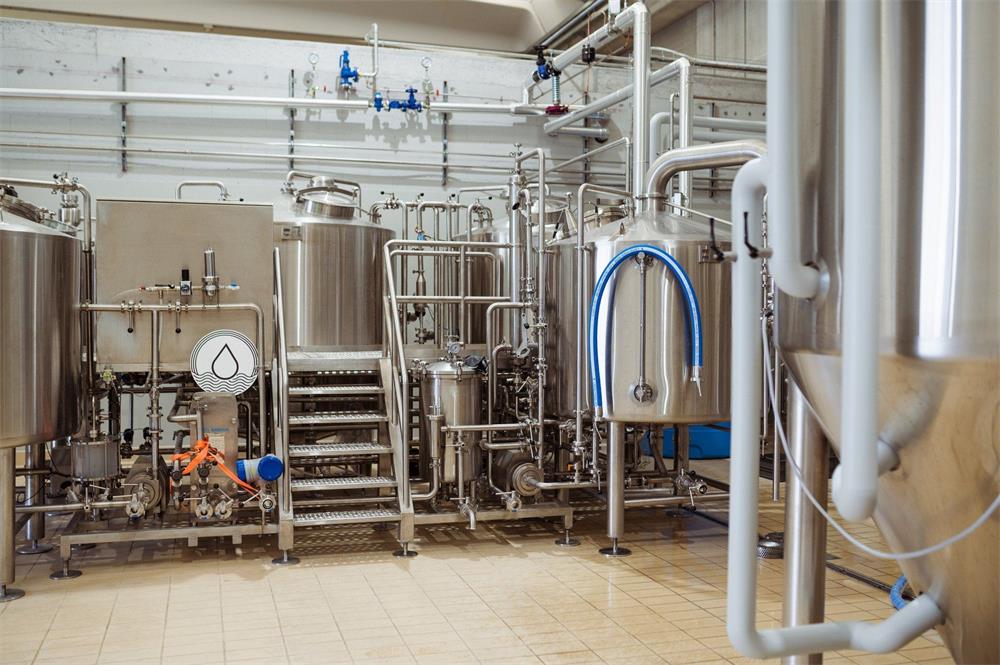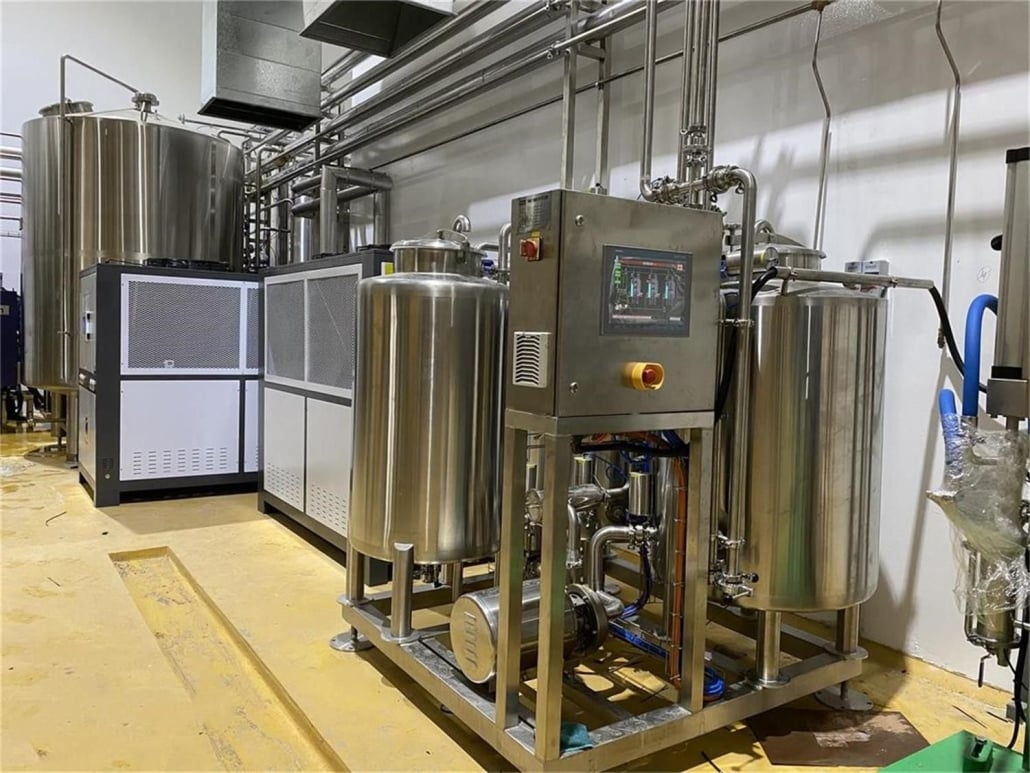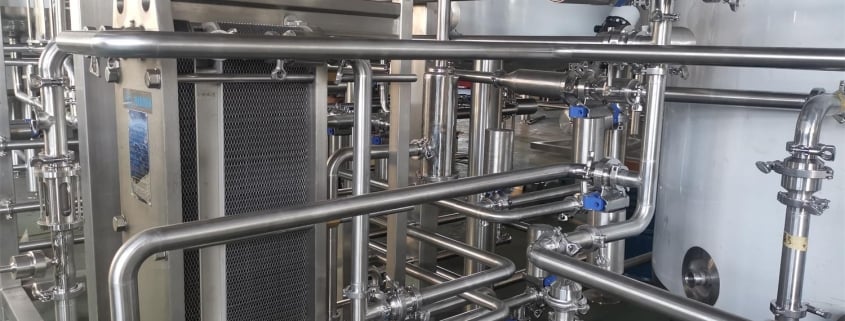10bbl brewhouse
Imagine this: you’ve meticulously crafted your signature beer recipe, one that bursts with flavor and stands out from the crowd. Now, you’re ready to take the leap from homebrewing to opening your own brewery. But where do you begin? The answer might lie in a magical number: 10.
A 10-barrel (bbl) brewhouse represents a sweet spot for many fledgling breweries. It offers a production capacity that allows you to scale up from homebrewing without venturing into the complexities and costs of massive setups. Let’s dive deeper into the world of 10bbl brewhouses, exploring everything from their core components to the brewing process itself.
the 10 Bbl Brewhouse
The heart of any brewery is its brewhouse, and a 10bbl system typically comprises several key pieces of equipment:
- Mash Tun/Lauter Tun: This versatile vessel is where the crushed grains (malt) are steeped in hot water, allowing enzymes to convert starches into sugars. The lauter tun then separates the sweet liquid (wort) from the spent grains.
- Brew Kettle/Whirlpool: Here, the wort is boiled, hops are added for bitterness and aroma, and the wort is clarified through a whirling motion.
- Hot Liquor Tank (HLT): This tank stores and heats water to the specific temperatures required for mashing and sparging (rinsing the grains).
- Cold Liquor Tank (CLT) (Optional): This tank holds chilled water used for wort cooling post-boiling.
- Pumps and Piping: These ensure the efficient transfer of fluids throughout the brewing process.
- Control Panel: This brain of the operation allows you to monitor and adjust temperatures, flow rates, and other brewing parameters.

Additional Equipment Considerations:
- Heat Source: Brewhouses can be heated by steam, direct fire, or electric elements. Each has its advantages and disadvantages in terms of efficiency and cost.
- Fermentation Tanks: These vessels house the wort after it’s been transferred from the brewhouse and inoculated with yeast. Here, the magic happens as the yeast ferments the sugars into beer.
- Brite Tanks: These tanks are used to clarify, carbonate, and condition the beer before packaging.
Brewing with a 10 Bbl Brewhouse
Now that you’re familiar with the equipment, let’s walk through a simplified version of the brewing process in a 10bbl brewhouse:
- Grain Milling: The malted grains are cracked open in a mill, increasing their surface area for optimal water absorption during mashing.
- Mashing: Crushed grains are mixed with hot water in the mash tun, where enzymes convert starches into fermentable sugars.
- Lautering: The sweet wort is separated from the spent grains in the lauter tun using a lautering process.
- Boiling: The wort is transferred to the brew kettle and boiled for a specific time. During boiling, hops are added for bitterness, aroma, and flavor. The whirlpool action within the kettle helps to clarify the wort.
- Cooling: The wort is rapidly chilled to a temperature suitable for yeast pitching.
- Fermentation: The cooled wort is transferred to fermentation tanks, where yeast is added. The yeast consumes the sugars in the wort, producing alcohol and carbon dioxide – the magic of fermentation!
- Conditioning, Carbonation, and Packaging: After fermentation, the beer is transferred to conditioning tanks for further settling and flavor development. Carbonation is achieved through various methods, and finally, the finished beer is packaged in kegs, bottles, or cans.
Capacity, Layout & Customization
When planning your brewery, it’s crucial to consider the space you have available. Here’s a breakdown of some key factors:
Brewhouse Capacity:
- A 10bbl brewhouse can typically produce 10 barrels of wort per brew. This translates to roughly 310 gallons, enough to yield approximately 500-600 cases of bottled beer.
- The actual number of batches you can brew per week will depend on factors like fermentation times, tank availability, and cleaning schedules.
Space Requirements:
- A 10bbl brewhouse will have a footprint of roughly 12′ x 20′, though this can vary depending on the specific equipment configuration.
- You’ll also need additional space for grain storage, fermentation tanks, brite tanks, packaging equipment
Suppliers, Pricing & Installation
Equipping your brewery with a top-notch 10bbl system requires careful consideration of suppliers and pricing. Here’s a roadmap to navigate this crucial step:
Suppliers:
The craft brewing industry boasts a vibrant community of equipment manufacturers. Here are some factors to consider when choosing a supplier:
- Reputation and Experience: Look for established companies with a proven track record of designing and building reliable 10bbl brewhouses.
- Customization Options: Does the supplier offer flexibility in terms of equipment configuration and features to suit your specific needs and brewing style?
- Service and Support: Reliable after-sales support is essential for troubleshooting and ensuring smooth operation of your equipment.
- Lead Times and Installation: Consider how long it will take for your brewhouse to be manufactured and installed. This can impact your brewery’s opening timeline.
10 Bbl Brewhouse Price Range:
- Expect a 10bbl brewhouse to range in price from $100,000 to $250,000 USD. This variation depends on several factors:
- Features: More sophisticated automation and advanced control systems will add to the cost.
- Material Quality: Higher-grade stainless steel will generally be more expensive.
- Heating Source: Electric heating elements tend to be pricier than steam or direct fire setups.
- Domestic vs. International: Domestically manufactured brewhouses may carry a premium compared to their overseas counterparts.
Additional Considerations:
- Remember, the cost of your brewhouse is just one piece of the puzzle. Factor in additional expenses like permitting, brewery build-out, furniture, and ongoing operational costs.
Installation:
- Many brewhouse manufacturers offer installation services, though some may require you to contract a separate installation crew.
- Ensure proper permitting and compliance with local regulations before installation commences.
Selecting a 10 Bbl Brewhouse Supplier
With a plethora of suppliers vying for your business, here are some key questions to ask yourself when making this critical decision:
- Does the supplier offer a complete brewing system or do they specialize in individual components? A complete system can simplify the selection process and ensure compatibility of all equipment.
- Can the supplier provide references from satisfied customers with similar sized brewhouses? Talking to other brewers who have used the supplier’s equipment can offer valuable insights.
- Does the supplier offer financing options? Spreading out the cost of your brewhouse can be helpful for managing your brewery’s initial investment.
By carefully evaluating these factors, you can choose a supplier who will provide a high-quality 10bbl brewhouse that meets your specific needs and budget.

Advantages and Limitations of 10 Bbl Brewhouses
Before taking the plunge, let’s explore the advantages and limitations of a 10bbl brewhouse:
Advantages:
- Scalability: A 10bbl system allows you to scale up production from homebrewing without an enormous upfront investment.
- Flexibility: You can brew a wider variety of beers compared to smaller homebrew setups, catering to diverse customer preferences.
- Manageability: A 10bbl brewhouse is a size that can be effectively managed by a relatively small team, keeping labor costs in check.
- Marketability: This size positions you well for distribution to local restaurants, bars, and bottle shops, allowing you to establish your brand in the craft beer market.
Limitations:
- Production Capacity: While it offers more volume than homebrewing, a 10bbl system may not be sufficient to meet high demand if your brewery experiences explosive growth.
- Space Requirements: Even though smaller than larger brewhouses, a 10bbl system still necessitates dedicated space for equipment and processes.
- Competition: The craft beer market is crowded, so you’ll need a solid marketing strategy to stand out amongst established and emerging breweries.
By understanding these pros and cons, you can make an informed decision about whether a 10bbl brewhouse is the right fit for your dream brewery.
Additional Considerations:
There are additional factors to ponder beyond the core advantages and limitations. Consider your long-term vision for the brewery. If you anticipate significant growth down the line, a 10bbl system might be a stepping stone to a larger brewhouse in the future.
FAQ
| Question | Answer |
|---|---|
| What permits and licenses do I need to operate a brewery with a 10bbl brewhouse? | Permitting requirements can vary depending on your location. Generally, you’ll need to obtain licenses for things like food and beverage production, alcohol manufacturing, and sales. Consulting with a lawyer or accountant familiar with brewery regulations in your area is highly recommended. |
| How much does it cost to operate a 10bbl brewery? | Operating costs encompass a variety of factors, including ingredients, utilities, rent, salaries, marketing, and keg/bottle/can expenses. The exact cost will depend on your location, brewing practices, and production volume. Industry estimates suggest budgeting around 60-70% of your revenue for operational costs. |
| What is the difference between a 2-vessel and a 3-vessel 10bbl brewhouse? | A 2-vessel brewhouse typically combines the mash tun and lauter tun into a single vessel, simplifying the brewhouse but potentially limiting your ability to multitask during the brewing process. A 3-vessel system offers a dedicated mash tun and lauter tun, providing more flexibility for brewers who like to experiment with different mashing techniques. |
| Can I expand a 10bbl brewhouse in the future? | Absolutely! Some manufacturers design 10bbl brewhouses with modular components that can be expanded upon later. This might involve adding additional fermenters, brite tanks, or even another brewhouse kettle to increase your production capacity. |
| How long will it take to set up a brewery with a 10bbl brewhouse? | The timeframe can vary depending on factors like permitting timelines, equipment lead times, and build-out of your brewery space. A realistic estimate could be anywhere from 3 to 6 months, though it could be shorter or longer depending on unforeseen circumstances. |













